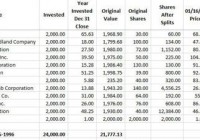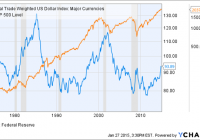Thinking And Worrying Are Not The Same Thing!
Skeptical investors usually do well, cynics do not. A high market capitalization to GDP ratio indicates capital inefficiency. Bond markets are becoming increasingly dangerous. A cynic is someone who is negative ahead of the evidence and will who only, if ever, grudgingly admit to reality. Financial markets have always been afflicted by cynical perma-bears and detractors who simply refuse to acknowledge the power of the market’s relentless upward drift in equity prices over the past two centuries. The data is unassailable. The prophets of doom are ever ready to announce the imminent collapse of the entire financial system and predict that yes, this time is truly different! In other words, they want to short civilization- a view perhaps best expressed by selling all financial assets and hoarding real property such as gold (NYSEARCA: GLD ) . Personally, I subscribe to a more optimistic Whig historiography, which while conceding setbacks, believes in the inexorable march of progress. The most fundamental aspect of successful investing is to recognize that more wealth has been created by investing in evolution and growth than has been saved by preparing for Judgment Day. However, I am paid to worry and to question my chief premises. That is my job. The U.S. equity market has had a great five-year Bull Run, but there are now clear signs of exhaustion. Maybe today’s lofty equity prices are indeed just a reflection of a highly manipulated monetary system and are due for a big correction. Is it wise to reduce exposure now that both U.S. and European equities seem to have broken out on the upside? Here are some facts: S&P 500 company year over year sales growth was 3.1% in 2014 and is forecast to decline by .2% in 2015. More troubling, year over year earnings growth looks set to rise by just 2.4% in 2015 after a 7.2% rise in 2014. Of course, the energy sector is pushing estimates down, but even some of 2014’s best performing sectors such as Heath Care (XLV ) and Utilities (XLU ) , are forecast to have big percentage earnings declines, although profit margins seem set to remain at near record highs. As always, it is certainly possible that estimates get revised up or down as 2015 plays out. Everyone knows the S&P 500 Index has doubled in price over the past five years, yet U.S. real GDP has only grown by a cumulative 12% during the same period. Admittedly, the S&P 500 index is more than a reflection of the U.S. economy, but world GDP has only grown by only 15% since 2009, not outpacing the U.S. by any noticeable margin. The much-maligned market capitalization to U.S. GDP ratio now stands at 124% – meaning that the S&P 500 is collectively worth more than all the output of the U.S. economy. An illustrative equivalence may be in order here. Individually, many companies have a single year sales or revenues far in excess of their capital. For example, Caterpillar (NYSE: CAT ) had 2013 revenues of $56bn with capital of $21bn. Similarly, Apple (NASDAQ: AAPL ) had $183bn in sales on $112bn of capital in its latest annual report. In other words, it’s reasonable to assume that one-year sales exceed capital for many companies, yet overall capital exceeds sales for the entire S&P 500! One must wonder why so much capital is needed in aggregate to produce so little in sales. The TMC or Total Market Cap to GDP ratio is tainted by the largest banks such as JP Morgan Chase (NYSE: JPM ) , which held $211bn of equity in 2013 to generate just $96bn is sales. Now I understand that JPM and the other banks are forced to hold much more capital that they would like to in an ideal post-2008 world. Regardless of the reasons, it is fair to conclude that the S&P 500 is too highly capitalized, in aggregate, given the sales and earnings metrics of its constituent companies in relation to overall capitalization. It simply means that on average, the return on one unit of capital will be less than if the capital was more prudently deployed. The current situation can only resolve itself in one of the five ways listed here: Sales and earnings grow at a much faster pace than forecast Companies decrease capital by increasing dividends and share buybacks There is a sudden burst in productivity, allowing companies to extract greater units of earnings from the current stock of capital The overall equity market sells off Nothing changes and GDP eventually catches up with the market cap of the S&P 500 (NYSEARCA: SPY ) I am not in the habit of making bold predictions. Each of the five outcomes listed above are possible, but the last two options, a market sell-off or no change, requires the least amount effort to succeed in bringing the TMC ratio back to a more sustainable level. The main fault with my argument here and indeed with many notions about lofty valuations needing to decline is that equities, even U.S equities, offer compelling value on a relative basis compared to bonds. At a multiple of 20x, the S&P 500 offers an earnings yield of 5% and when coupled with the dividend yield of 2%, offers investors an expected return of around 7%. That compares favorably with U.S. 10y government bonds that now offer about 2.10%. Regrettably, investors cannot spend expected returns and must wait for real returns to materialize. Nonetheless, bonds, as an asset class, are becoming increasingly dangerous. Little noticed during this past month was the doubling of Japanese 10y yields from 20 bp to 40 bp. Sure, Japan’s yields are still extraordinarily low, as are yields in Germany, the UK and, of course, here in the U.S. Volatility in the bond markets is on the rise too. See (CBOE: VXTYN). If U.S 10y government bond yields were to double from 2.10% to 4.20%, admittedly a very low probability scenario, investors would be looking at a near 18 full point loss on their holdings (200 bp * modified duration of ~9). Now I know active traders would never remain idle in the face of such a selloff, however, many passive investors, housed deep inside index funds, will see real losses mount as bond yields rise. So I think it too soon to underweight U.S. equities for the simple reason that there is nothing worth over weighting right now. Holding a reasonably diversified portfolio, suited to an investor’s goals and risk preferences, remains the best means to build real wealth and avoid the pitfalls of over-reacting to high valuations and volatility. Expanding the investable universe, both in geographic and asset class terms, will enhance a portfolio’s risk and return characteristics. Diogenes of Sinope is credited with being the world’s first great cynic. He famously said, “I am Diogenes the Dog. I nuzzle the kind, bark at the greedy and bite scoundrels.” According to legend, he carried a lamp by day in his cynical search for an honest man. Today, investors are hunting for decent returns while hoping to avoid catastrophic draw downs. That is a job for a skeptical optimist, not a scoffer of the most ordinary kind. What about the search for an honest man? I am convinced they do exist. You just need to know where to look. Disclosure: The author is long SPY. (More…) The author wrote this article themselves, and it expresses their own opinions. The author is not receiving compensation for it. The author has no business relationship with any company whose stock is mentioned in this article.

